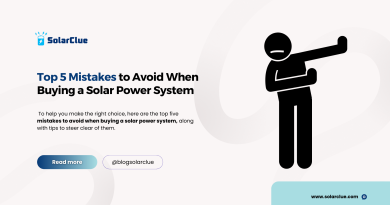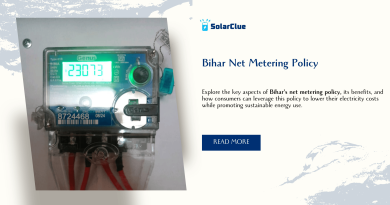How Do On Grid And Off Grid Solar Power Systems Work
Table of Contents The demand for renewable energy sources has significantly increased in the recent past, and solar power systems have emerged as a leading option. As people look to clean, renewable energy, it’s important to understand the two primary configurations of solar power systems: on-grid and off-grid. While they have similarities, they exhibit significant differences in functionality, cost, and applications. This article will delve into the workings of both on-grid and off-grid solar power systems to help you understand their operations more clearly. First, it’s crucial to understand what a solar power system is. It is a system that generates electricity from sunlight, usually for use in homes or businesses. The set-up comprises solar panels, an inverter for converting direct current (DC) to alternating current (AC), and sometimes, a battery storage system. Essentially, these systems convert sunlight into usable electricity, helping to reduce reliance on traditional energy sources and lowering energy bills. An on-grid solar power system, also known as a grid-tied or grid-connected system, is linked to the local utility grid. It is the most common type of solar power system for homes and businesses due to its efficiency and cost-effectiveness. The main components of an on-grid system are the solar panels and inverter. During the day, the solar panels harness energy from the sun and convert it into DC electricity. This DC power is then converted into AC power by the inverter, which is used to power electric devices in the building. When the solar power system generates more electricity than the building requires, the excess power is sent to the grid. This allows the owner to earn credits from the utility provider through a technique known as net metering. Conversely, during the night or cloudy days when the system is not generating enough electricity, power is drawn from the grid, ensuring the building consistently receives enough electricity. An off-grid solar power system, as the name suggests, operates independently of the utility grid. Instead of sending excess power back to the grid, the system stores the surplus energy in a battery for later use. Off-grid systems are typically used in remote areas where there is no access to the utility grid or for homeowners who want to be completely energy self-reliant. Like on-grid systems, solar panels absorb sunlight and convert it into DC power during the day. However, in an off-grid system, the power generated is directed to two areas: powering the building and charging a battery. The battery stores energy for future use, especially during the night or overcast days. This makes an off-grid solar power system a fully self-sufficient power source, but it comes with additional costs for batteries and maintenance. Deciding between an on-grid and off-grid solar power system depends on various factors such as location, budget, power needs, and personal preferences. On-grid systems are typically more affordable and require less maintenance. They are ideal for regions with dependable grid connectivity, allowing users to take advantage of net metering for additional cost savings. On the other hand, off-grid systems suit those who prioritize independence and sustainability, such as individuals in remote areas without reliable grid access or those who want to minimize their carbon footprint. In conclusion, both on-grid and off-grid solar power systems offer effective solutions for embracing renewable energy. The choice between the two essentially boils down to individual needs, location, and financial capacity. Regardless of the type selected, implementing a solar power system is a step towards a more sustainable future, protecting our planet while also potentially providing significant savings on energy costs. As our world continues to prioritize renewable energy, understanding these systems becomes increasingly crucial for homes and businesses alike.Introduction
Understanding Solar Power Systems
What is an On-Grid Solar Power System?
What is an Off-Grid Solar Power System?
Choosing Between On-Grid and Off-Grid Systems
Conclusion


